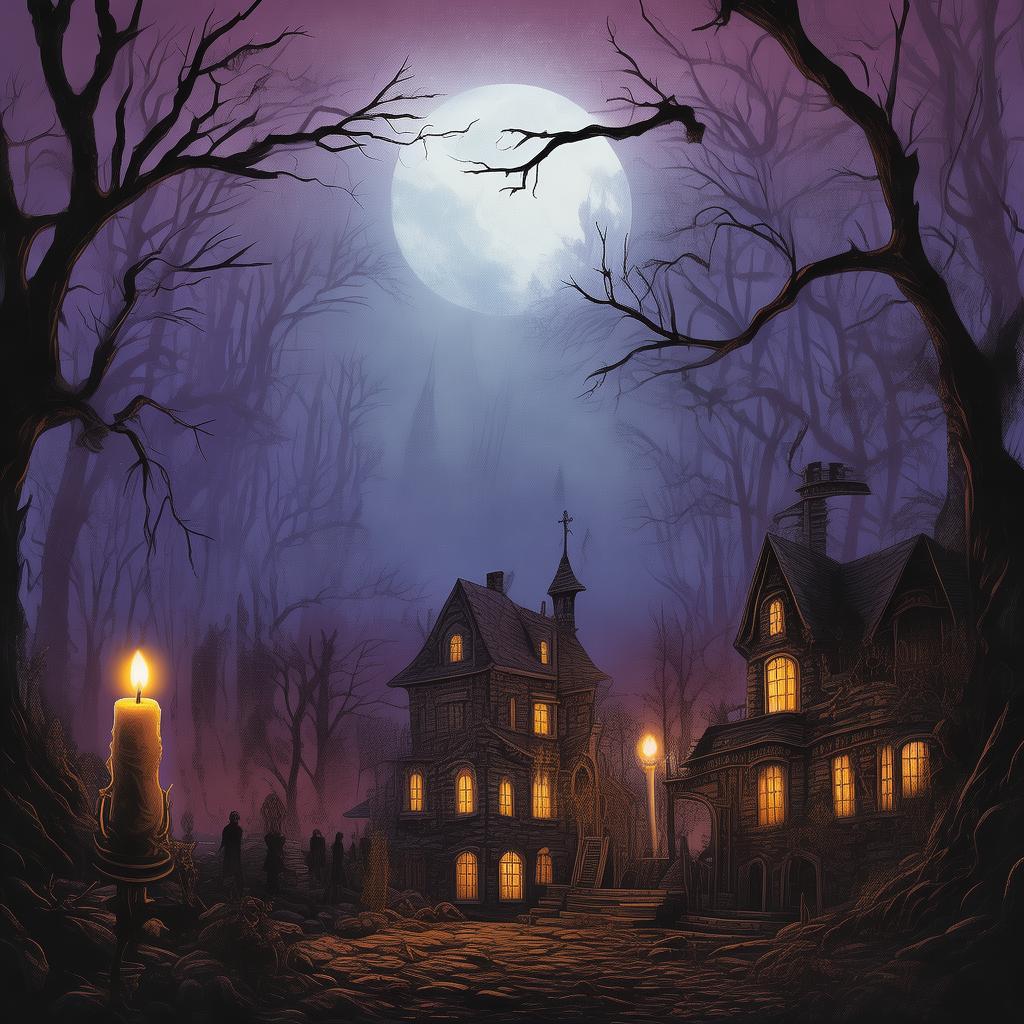Whispers of the Folding Paper: A Tale of Haunting Threads
The house was an old one, nestled in a village that seemed to have been forgotten by time. It was a place where the walls whispered tales of generations past, and the air carried the faint scent of paper and ink. The house's most prized possession was a delicate origami crane, meticulously folded by the matriarch of the family, Mrs. Chen. It was said that the crane was no ordinary paper figure—it was a piece of the family's legacy, a bond that spanned centuries and was woven into the very fabric of their existence.
The story of the crane began with the great-grandfather of the Chen family, a master origami artist whose skills were unparalleled. He had been tasked with creating a paper crane for a ritual that would ensure the prosperity and happiness of his descendants. The crane was to be passed down through the generations, a symbol of the family's connection to the ancient art and the unspoken agreement that it would be a guardian against evil.
As the years passed, the origami crane remained in the family's care. Each member was taught the delicate art of folding, and the crane was a constant presence in their lives. But as time waned, so did the family's connection to the ritual and the crane's significance. The crane became little more than a cherished heirloom, a relic of a bygone era.
Until the day that Mrs. Chen passed away, leaving the origami crane to her only daughter, Lily. Lily was a pragmatic woman, focused on her career and the modern world. She had no time for the old traditions, nor did she understand the crane's significance. She placed it in a drawer, out of sight and out of mind.
But as the days turned into weeks, Lily began to notice strange occurrences. She would hear whispers in the dead of night, as if the house itself were trying to communicate. The whispers grew louder, more insistent, and Lily's unease grew with them. She began to feel a presence, a cold hand on her shoulder or a draft in the room where the crane had once been kept.
One evening, as Lily sat in her study, she couldn't shake the feeling that she was being watched. She stood up and walked to the drawer where the crane had been stored. The drawer was ajar, and there, in the dim light, was the origami crane, its wings outstretched as if it were ready to take flight. She reached out to touch it, but her hand passed through the crane as if it were no more than a ghostly illusion.
Suddenly, the whispers grew louder, and Lily felt a chill run down her spine. She turned and saw the figure of her mother standing before her, her face twisted in horror. Lily's heart raced as she realized that the figure was no longer a memory, but a manifestation of her mother's terror. "Don't touch it," her mother's voice echoed, a warning that cut through the silence.
Lily's eyes were drawn to the crane, and she saw that it was changing. The paper was folding itself, the wings and tail emerging from the folds, the crane coming to life. She felt a strange connection to the figure, as if it were a part of her own soul. But as the crane took form, it also revealed the truth behind its origins.
The crane was a curse, not a guardian. It bound the Chen family to an ancient pact, a promise that they would continue the origami tradition and perform the ritual to keep the curse at bay. If they failed, the curse would claim them, one by one, until the last member of the family fell.
Lily knew she had to break the curse, but she couldn't do it alone. She sought out the wisdom of an old origami master, a man who had been trained by her great-grandfather. He explained that the crane was a vessel for the family's collective energy, and only by understanding and releasing that energy could she break the curse.
With the master's guidance, Lily began to fold paper, each fold a step toward freedom. She learned the secrets of the origami tradition, the hidden meanings within each fold, and the stories that had been passed down through the generations. She came to understand the connection between her family and the crane, and the weight of the curse that had been imposed upon them.
The final fold was the most difficult, a complex pattern that represented the release of the family's energy. Lily's hands trembled as she worked, her mind racing with the implications of what she was about to do. But as the crane took shape, she felt a surge of power, a sense of peace that had been absent for so long.
With the last fold complete, the crane opened its wings, and a bright light filled the room. The whispers stopped, and the presence of her mother vanished. Lily was left standing in the empty room, the crane in her hands, a symbol of her newfound freedom.

As she looked around, she saw the house in a new light. It was no longer a place of dread and fear, but a place of history and connection. The origami crane had been a part of her family's legacy, a reminder of their past and their future. And with the curse broken, she felt a sense of hope and renewal.
Lily placed the crane in a frame, a testament to the struggle and triumph that had defined her journey. She knew that the curse would linger in the memories of her ancestors, but she also knew that they had fought hard to break free. And with the crane as a symbol of their victory, she felt a deep sense of peace.
The house was still haunted, but now by the whispers of a legacy, a family's story that would be told for generations to come. And the origami crane, once a source of fear, now stood as a beacon of hope, a reminder that even the most ancient curses could be broken by the strength of the human spirit.
✨ Original Statement ✨
All articles published on this website (including but not limited to text, images, videos, and other content) are original or authorized for reposting and are protected by relevant laws. Without the explicit written permission of this website, no individual or organization may copy, modify, repost, or use the content for commercial purposes.
If you need to quote or cooperate, please contact this site for authorization. We reserve the right to pursue legal responsibility for any unauthorized use.
Hereby declared.









